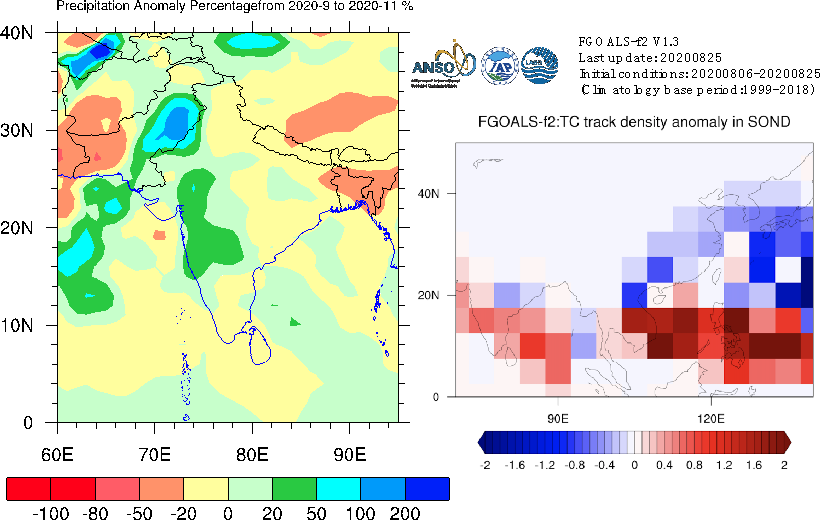The latest seasonal forecast was released by the ANSO-MISSPAD project on Aug 25, 2020. Based on the FGOALS-f2 Sub-seasonal to Seasonal Ensemble Prediction System from Institute of Atmospheric Physics, Chinese Academy of Sciences and the China Multi-Model Ensemble Prediction System (CMME) from China Meteorological Administration, under a negative Indian Ocean Dipole (IOD), i.e. warmer than normal sea surface temperature over the eastern and cooler sea surface temperature in the western Indian ocean.
This prediction shows that the precipitation anomaly of month September October and November, which indicates that the negative anomaly of precipitation over Nepal, which may turn into regional drought condition, at most part of the country the precipitation will be decreased by 0 to 20 %, but in the North-central part (leeward side of the Annapurna, Machhapuchare range ) precipitation will be decreased by 20 to 50 %. The decline in precipitation indicates that there may be a chance of shortage in water supply, surface water as well as groundwater. and this may affect the agricultural sector and crop production reduction. Similarly, Bangladesh and Bhutan may get dry condition, whereas eastern Pakistan will get more wet condition.
In short, this prediction indicates that that the northern, eastern and southern part of the South Asia will experience the low precipitation and high temperature, but the western and south-western part (Pakistan) will get higher precipitation.

Figure 1. The precipitation anomaly percentage (%) and the anomalous activity of Tropical Cyclone (TC) predicted by ANSO-MISSPAD for Fall 2020.
More information
.The Multi-model-Integrated Subseasonal-to-Seasonal Prediction and Application in Disaster Risk Reduction
.The FGOALS-f2 Subseasonal to Seasonal Ensemble Prediction System
.The China Multi-Model Ensemble Prediction System
Source:
Qing Bao & Dipendra Lamichhane, Institute of Atmospheric Physics, Chinese Academy of Sciences
Jing Yang & Yalan Fan, Beijing Normal University

